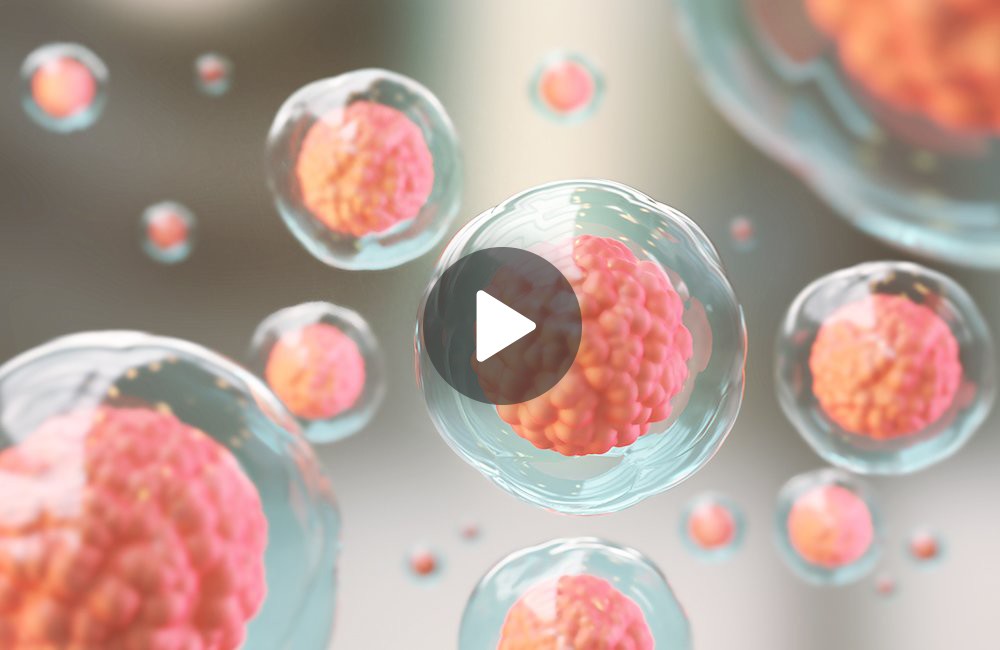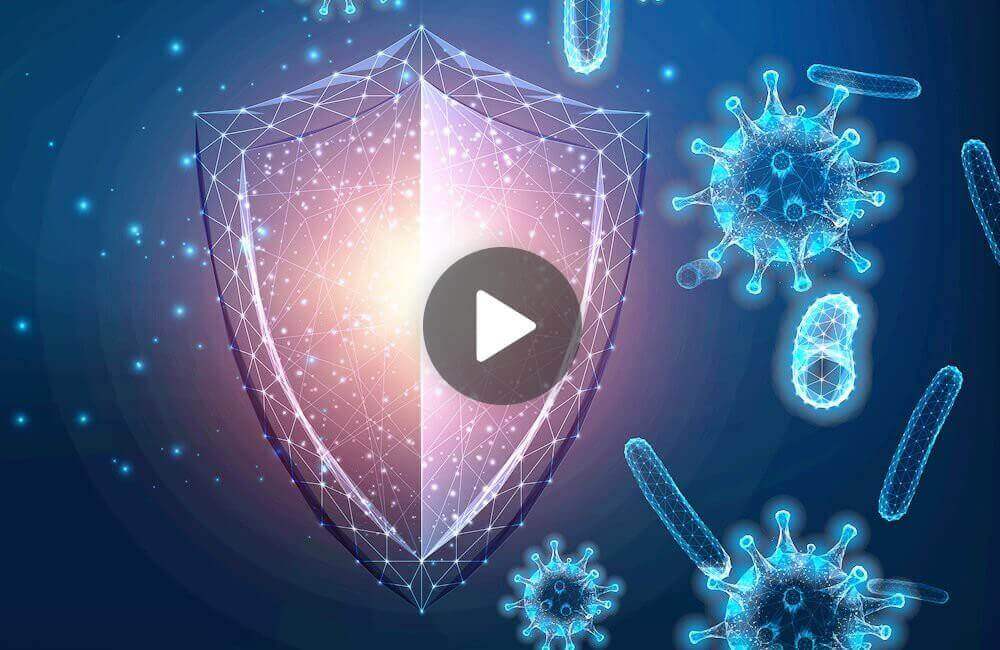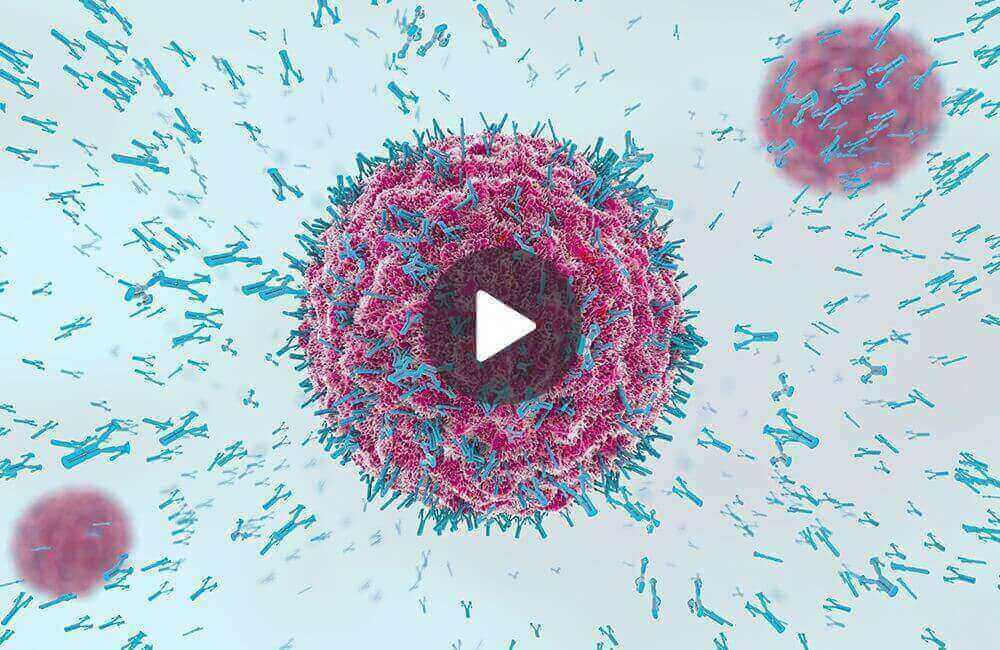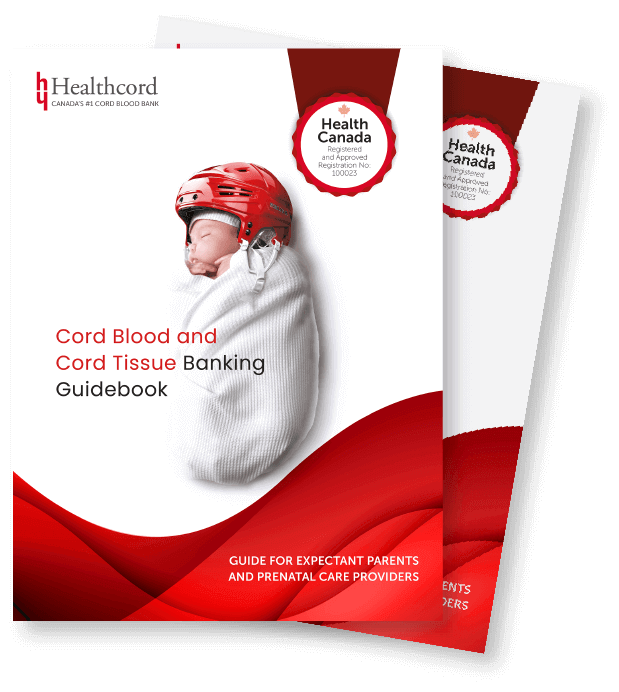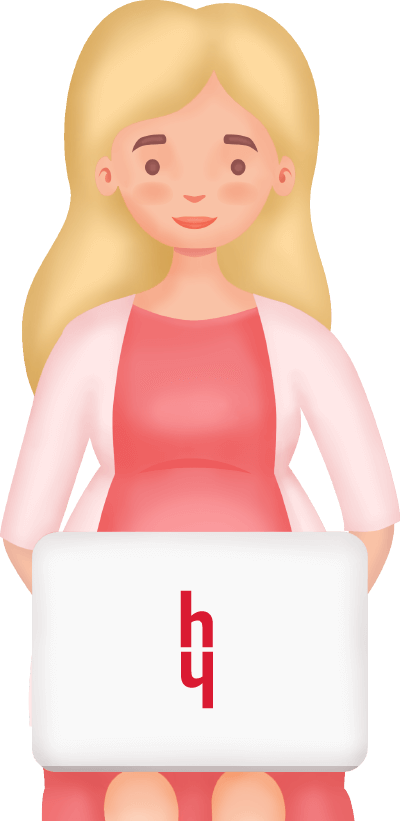Healthcord Webinar Series
Immunity, infections and vaccines
Duration
5:00 minutes
Category
Stem cell therapy
Series
Cord blood banking
Objective
Educational
What you will learn
- What is immunity?
- How vaccines work
- Types of immunity
- Developing the strength of the immune system
Immunity, infections and vaccines
This lesson explores the immune system and how humans develop immunity in response to pathogens or vaccines.
Each day we are exposed to a variety of different pathogens in the environment such as bacteria and viruses. When one of these microbes happens to get inside our bodies, being able to recognize them as being invaders so they can be destroyed is very important. This sums up immunity. The immune system can recognize pathogens and destroy them before they can take over our bodies.
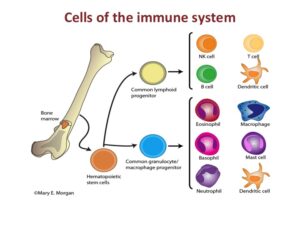 The human immune system is quite complex and involves several different organs, so we have chosen to focus on one component of this system, the immune cells.
The human immune system is quite complex and involves several different organs, so we have chosen to focus on one component of this system, the immune cells.
The immune system consists of a number of different immune cells, each with specific functions in the immune response. All of these cells are derived from a single type of stem cell known as a hematopoietic stem cell.
Within the body, hematopoietic stem cells are located in the bone marrow. In addition, cord blood represents another source of hematopoietic stem cells.
Two main methods that can be utilized to develop immunity: active immunity and passive immunity.
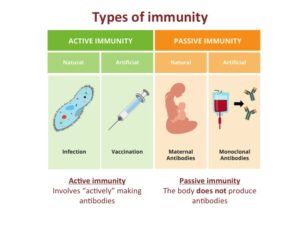 One branch of active immunity involves making antibodies, the large Y shaped proteins used by the immune system to recognize invaders. Antibodies can be developed in response to an infection or in response to a vaccine.
One branch of active immunity involves making antibodies, the large Y shaped proteins used by the immune system to recognize invaders. Antibodies can be developed in response to an infection or in response to a vaccine.
Passive immunity does not involve making antibodies. Instead, antibodies are passed along. Passing of antibodies from mother to child in breast milk is one example of naturally acquired passive immunity.
Passive immunity can also be acquired artificially; in this case, a blood sample from a person with antibodies for a specific infection is transfused into a person who is unable to generate antibodies.
Passive immunity can also be acquired artificially; in this case a blood sample from a person with antibodies for a specific infection is transfused into a person who can’t make antibodies.
Vaccines highlight one mode of developing active immunity. Vaccines can be made in several different ways. They can contain either a dead or weakened form of a pathogen, a toxin produced by a pathogen, or a protein found on the surface of a pathogen.
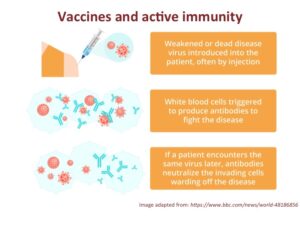 When a person receives a vaccine (for influenza, for example), the dead or weakened form of a pathogen is injected into the body. The immune system will recognize the foreign pathogen and signal white blood cells to make antibodies that can fight the disease.
When a person receives a vaccine (for influenza, for example), the dead or weakened form of a pathogen is injected into the body. The immune system will recognize the foreign pathogen and signal white blood cells to make antibodies that can fight the disease.
As a result, the body will develop a set of antibodies that can recognize this specific pathogen. So if there is an encounter with the same pathogen in the future, the antibodies made in response to the vaccine will recognize the virus and destroy it before it can harm your body. In essence, the person has developed immunity against the specific pathogen from the vaccine.
Our immune memory, in this case, the number of antibodies against different diseases or the antibody repertoire against different diseases, increases as we age.
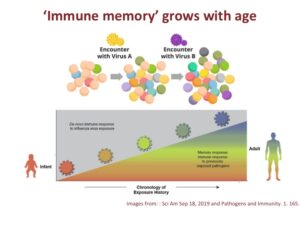 We are all born with a small pool of antibodies. Then you succumb to your first viral infection with an exposure to virus A. Following this encounter, you now have antibodies against virus A.
We are all born with a small pool of antibodies. Then you succumb to your first viral infection with an exposure to virus A. Following this encounter, you now have antibodies against virus A.
Next, you are exposed to virus B. As a result, new antibodies are added to your repertoire to recognize virus B. Your immune system now contains antibodies to recognize both virus A and virus B.
Each instance a person is exposed to a new pathogen, this process is repeated. The end result then is quite simple. Every day, we are exposed to many different microbes in the environment. As a result, our immune systems continue to develop its strength until we start to age.
Aging changes our immune system along with it our ability to respond to infections. Find out more about what happens to the immune system with age in our next lesson, the immune system and aging.
More topics you might like
Continue your journey by selecting another topic.
What are newborn stem cells and why are they important?
3:45 minutes | Stem cell basics
Find out more about how our immune systems change with age
4:30 minutes | Stem cell therapy
Exploring ways to restore immunity
6:00 minutes | Stem cell therapy
A Precious Gift of a Lifetime
Registering for stem cell banking takes only a few minutes.
A Precious Gift of a Lifetime
Registering for stem cell banking takes only a few minutes.



